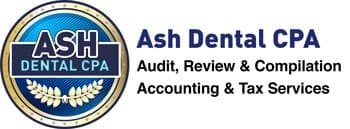Managing Overhead Costs in Dental Practices: Strategies for Financial Efficiency

In the competitive and ever-evolving landscape of dental care, efficient management of overhead costs is crucial to ensure your practice remains profitable and financially sustainable. As a dental practitioner, understanding the various components of your practice’s expenses and implementing strategies to control and optimize overhead can make a significant difference to your bottom line.
Effective management of overhead costs requires a keen understanding of your practice’s financial situation, coupled with a strategic approach to resource allocation and cost control. With expert guidance from Ash Dental CPA, you can navigate the complexities of overhead management, ensuring the long-term financial health and prosperity of your dental practice. Ash Dental CPA is a firm that specializes in providing comprehensive financial and business advisory services, aimed at helping dental practitioners across the United States to maximize their profits and improve their business operations.
So, let’s begin this journey of understanding the intricacies of managing overhead costs in dental practices, providing you with the strategies and insights required to optimize financial efficiency, bolster profitability, and elevate your practice to new heights of success and sustainability. Armed with the right knowledge and guidance, you can drive impactful change in your practice’s financial management, ultimately improving the quality of care and the long-term viability of your dental practice.
1. Analyzing Expense Categories and Identifying Cost Drivers
The first step in managing overhead costs in your dental practice is to effectively analyze your expenses and identify Key Performance Indicators (KPIs). Break down your overhead into categories, including:
Staff Wages and Benefits: Understand how your payroll costs, including wages, benefits, and overtime, contribute to your overall overhead expenses.
Facility and Equipment Costs: Examine your practice’s rent, utilities, maintenance, and equipment expenses to gain a comprehensive understanding of facility-related costs.
Administrative Expenses: Assess the costs associated with billing, insurance, supplies, and marketing activities, as well as any relevant professional and licensing fees.
Technology and Software Costs: Evaluate expenses related to practice management software, computer systems, and other technology investments that support your practice’s operations.
2. Implementing Cost-Saving Measures
Once you have a clear understanding of your overhead expense categories, implement cost-saving measures to reduce expenses and optimize profitability:
Staffing Optimization: Review your practice’s staffing levels and schedules, ensuring human resources are effectively utilized to avoid unnecessary overtime or underutilization of staff.
Negotiating with Vendors: Periodically evaluate and negotiate contracts with suppliers, labs, and other service providers to obtain the best prices, terms, and services possible.
Reducing Waste and Inefficiencies: Identify and address inefficiencies in your practice’s workflow, supply usage, and inventory management, reducing waste and cutting costs without compromising patient care.
Energy Efficiency: Explore ways to make your practice more energy-efficient, such as investing in energy-saving lighting, appliances, and HVAC systems, as well as optimizing your facility’s insulation and sealing.
3. Streamlining Operations and Systems
Streamlining your dental practice’s operations and systems not only improves efficiency but also can contribute significantly to overhead cost reduction:
Implementing Advanced Technology: Invest in modern practice management software and advanced dental equipment to streamline workflows, reduce manual labor, and improve patient outcomes, thereby reducing associated costs.
Consolidating Services and Tools: Combine services and tools where possible, such as utilizing an all-in-one practice management software platform or maintaining agreements with fewer vendors to simplify operations and reduce maintenance costs.
Automating Processes: Automate administrative tasks, such as appointment scheduling, reminder notifications, and billing processes, to save time and labor costs while improving patient communication and experience.
Optimizing Patient Scheduling: Develop a flexible patient scheduling system that maximizes chair time, minimizes gaps between appointments, and reduces costly downtime, ultimately improving practice efficiency and cost management.
4. Monitoring Key Performance Indicators (KPIs)
Continuously track and monitor relevant KPIs related to your dental practice’s overhead costs, enabling data-driven decision-making, and the ability to identify and address cost drivers proactively:
Overhead Ratio: Calculate your practice’s overhead ratio by dividing your total overhead expenses by total revenue, providing an overall assessment of your practice’s financial efficiency.
Labor Costs: Monitor the percentage of revenue spent on wages and benefits to ensure your staffing levels align with your practice’s financial goals.
Revenue per Patient Visit: Evaluate your practice’s average revenue per patient visit as an indicator of the effectiveness of your treatment offerings, pricing, and patient experience in generating revenue.
Facility and Equipment Costs: Track facility and equipment costs as a percentage of revenue to determine if these expenses are in line with industry benchmarks and your practice’s financial goals.
Conclusion
Effectively managing overhead costs is crucial for dental practices seeking to optimize financial efficiency and bolster profitability. By analyzing expense categories, implementing cost-saving measures, streamlining operations, and monitoring KPIs, you can drive impactful change in your practice’s financial performance.
Partnering with Ash Dental CPA’s dental financial advisor can provide expert guidance and insights, ensuring your overhead management strategies align with your practice’s financial goals and contribute to long-term success. Embrace data-driven decision-making and strategic cost control to elevate your dental practice to new heights of efficiency, profitability, and patient care excellence. To learn more about effectively managing overhead costs in dental practices, consider scheduling a consultation with Ash Dental CPA today and benefit from their comprehensive financial and business advisory services tailored for dental practitioners.
